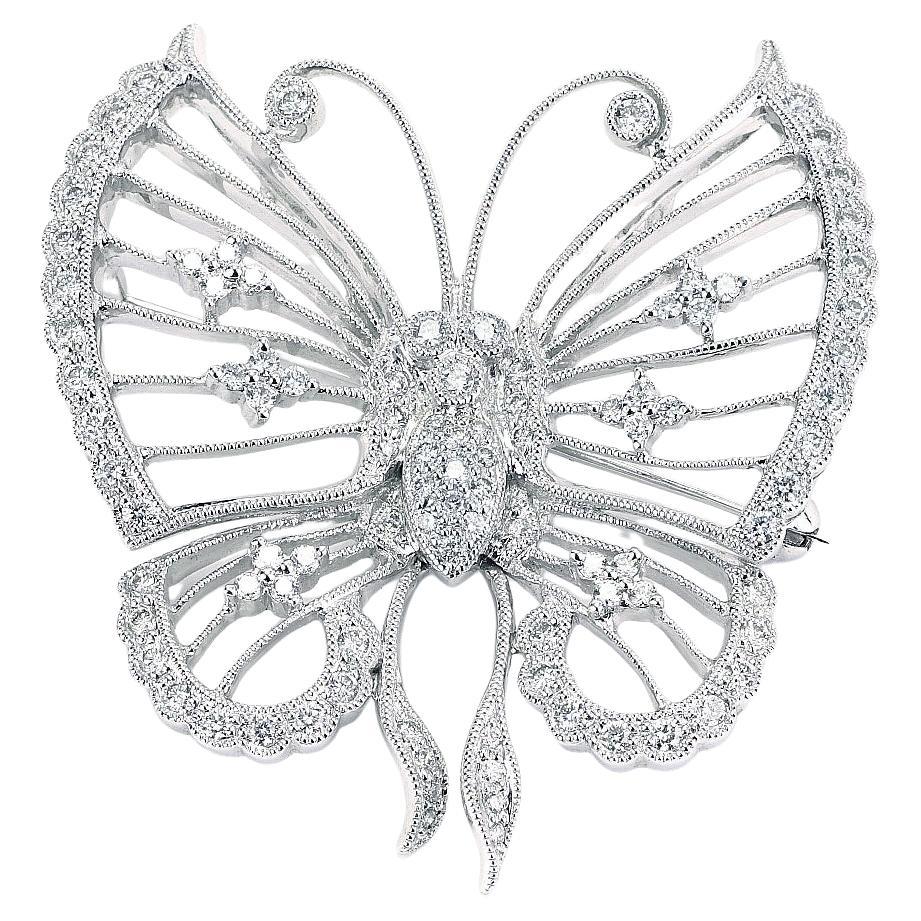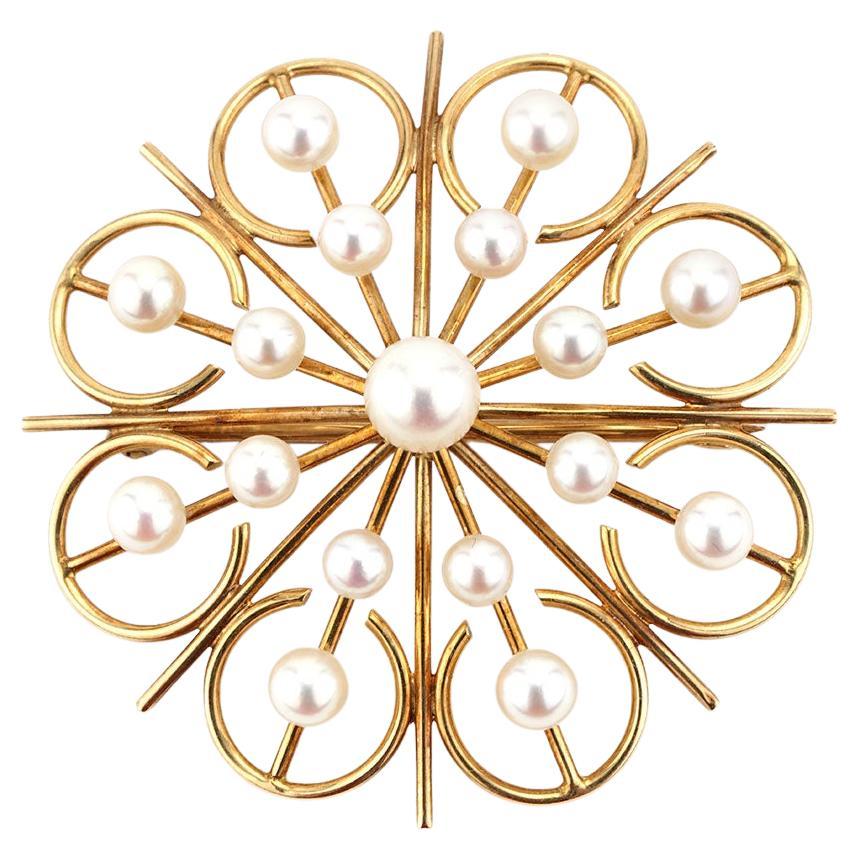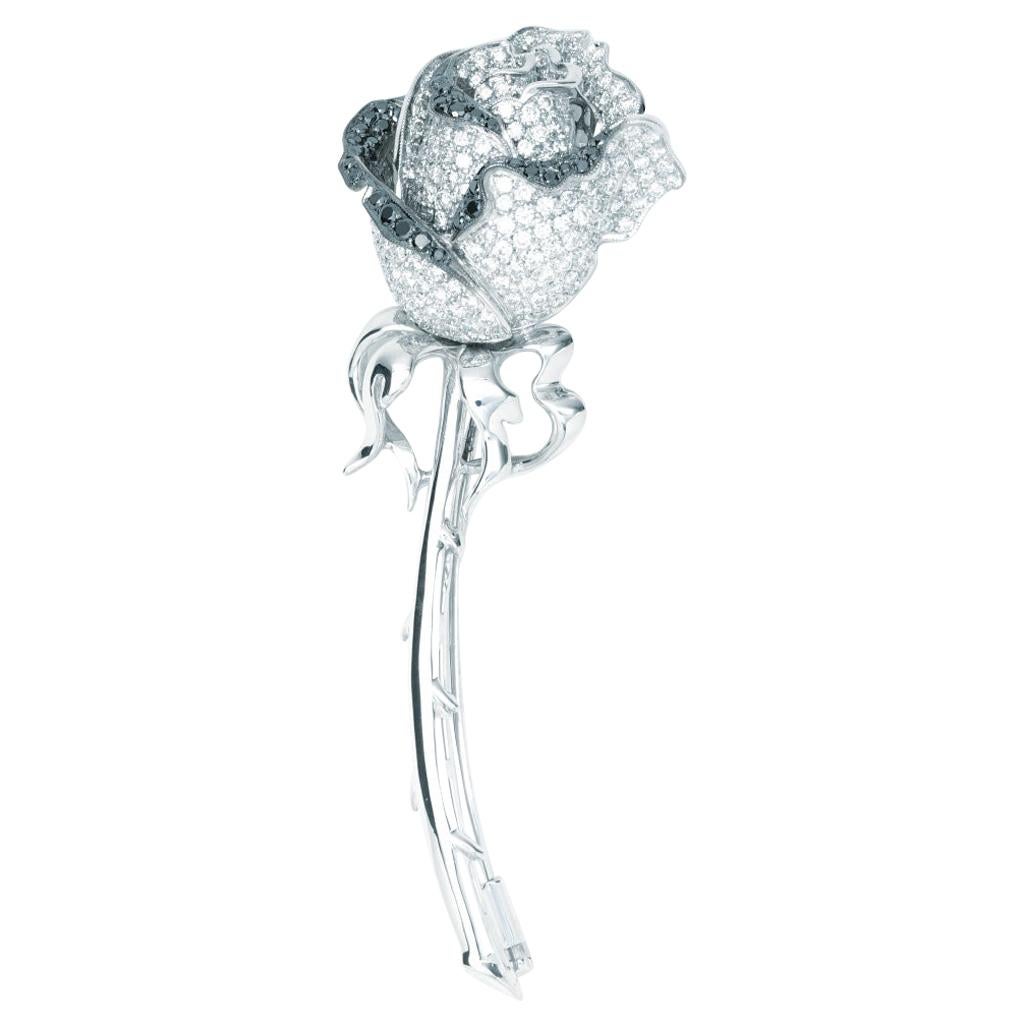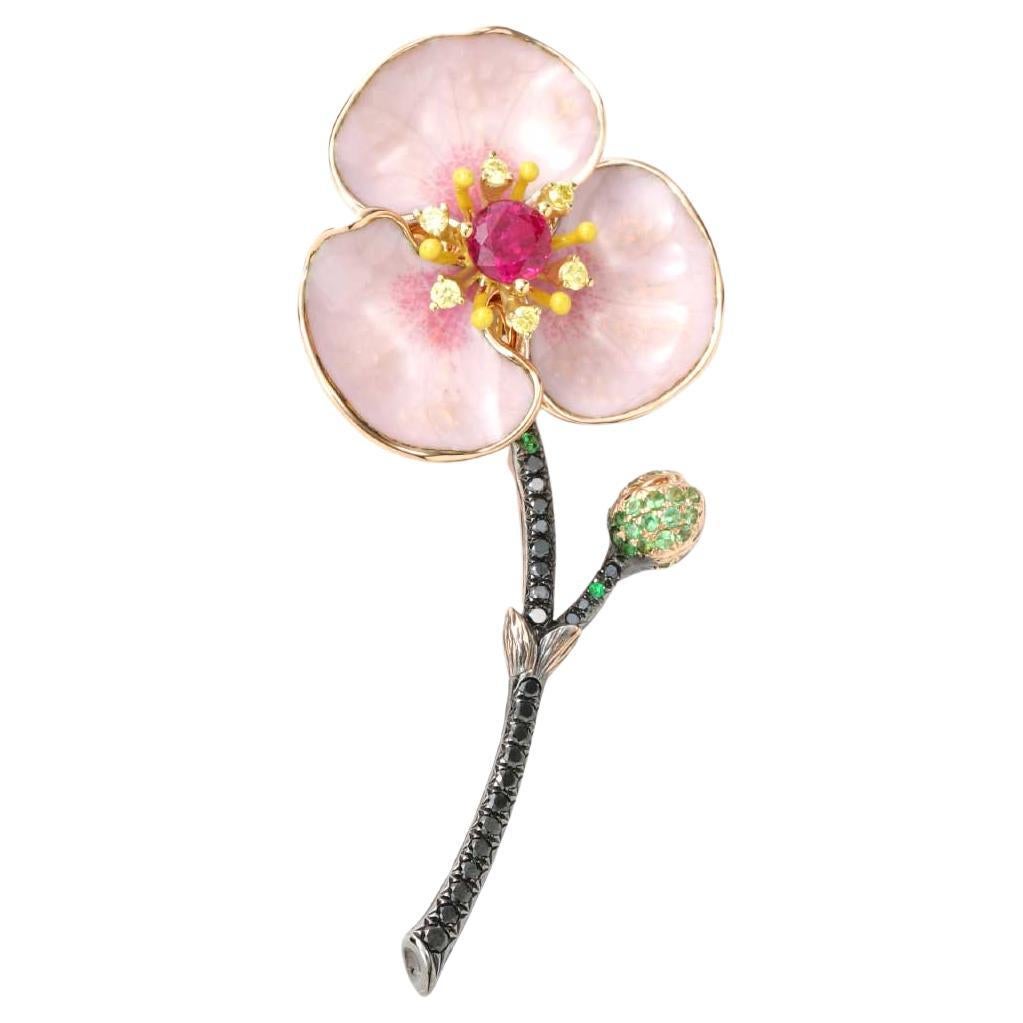Items Similar to Cruciform NielloInlay FleurDeLys GiltEngravedCopperAlloy Heraldry Brooch Pendant
Want more images or videos?
Request additional images or videos from the seller
1 of 16
Cruciform NielloInlay FleurDeLys GiltEngravedCopperAlloy Heraldry Brooch Pendant
About the Item
This 15th-Century period or older gilt copper and silver alloy amulet with niello inlay is an elaborately engraved three-dimensional brooch and pendant, which demonstrates the epitome of miniature decorative nielli in the early Renaissance by European goldsmiths of small cruciform or quatrefoil objects with heraldry symbols.
Beyond a dense array of engraved radiant-light, cloud and star motifs with punchwork, it features a 10mm fine black crested staff that is the Christian symbol for the Holy Trinity. This intricate engraving with niello has fleur-de-lys elements, like a French or Florentine coat-of-arms or monogram used to identify noble families or a significant person like a king. It tops a 5mm bar, which is bracketed by 10mm peaked bars that form a cross. When worn, it is positioned horizontally like an elongated barbed quatrefoil. The bars may be concealing a relic such as wood, while it is not clear how these pieces are attached to the front.
As a symbol of French conversion to Christianity, the French King Louis in the 12th Century made a fleur-de-lys element of the Holy Trinity vector the official emblem of his royal authority on shields. Later, English kings adopted it when claiming the French throne. By the 14th Century, the fleur-de-lys was used in family insignia that was sewn onto a knight's coat-of-mail surcoat. This coat-of-arms insignia could identify them if found on a battlefield.
The Met Cloisters museum collection includes a similarly sized mid-15th Century French gold brooch/pendant with a like pin hinge and c-clasp. On view in its Gallery 13, the description notes: "Expensive jewelry played an important role in betrothal and marriage, and the groom gave brooches to the bride as tokens of love."
From around the same mid-century Renaissance period, several Florentine artists who were master engravers and goldsmiths were known for the finest work in niello. While little of their work since the 1450s survives, some circa-1460-1480 processional crosses of gilt silver and copper that contain religious relics can be found in the collections of leading museums.
Otherwise, the poly-lobed shape and ornate engraving on this brooch/pendant seem to have evolved since the 5th Century from Anglo-Saxon "square-headed" bow brooches. They have the same copper and niello metalwork with equally lavish engraving, but with an older and larger Roman-style of fastening for cloaks. Comparatively, the findings on this brooch/pendant are among the earliest forms of hinge-and-clasp for an attached pin.
The central engraving on this brooch/pendant is painstakingly inlaid with niello, which is an ancient sulphur resin mixed with copper, silver and lead that resembles black enamel. It is rare for centuries-old niello to remain intact like this. This helps to date this to the early Renaissance before European artists mastered colorful and black enamels.
As signs of age and use, the brooch/pendant in very good condition has minute oxidation and dark spots, along with a front hair-line scratch across a textured edge and a pinpoint indentation at the side peak of one of the bars. These are not visible with the naked eye, while they are apparent in our closeups. The spots of verdigris and white metal indicate other elements below the gilding including silver.
We took some of the photos in natural light to best show the metallic colors. While the brooch/pendant has red tones associated with copper in some light, it otherwise appears a matte golden color to suggest there may be gold in the gilt.
The amulet had been a family heirloom found at a U.S. estate in New York, but without any history.
- Metal:Gilt Metal,Mixed Metal,Niello,Silver,Copper
- Weight:6.88 g
- Dimensions:Height: 1 in (25.4 mm)Width: 1.5 in (38.1 mm)Depth: 0.5 in (12.7 mm)
- Style:Renaissance
- Place of Origin:Europe
- Period:15th Century and Earlier
- Date of Manufacture:1440-1500
- Condition:Wear consistent with age and use.
- Seller Location:Chicago, IL
- Reference Number:1stDibs: LU3244219297952
About the Seller
5.0
Vetted Seller
These experienced sellers undergo a comprehensive evaluation by our team of in-house experts.
Established in 2012
1stDibs seller since 2022
9 sales on 1stDibs
Typical response time: 1 hour
- ShippingRetrieving quote...Ships From: North Adams, MA
- Return PolicyA return for this item may be initiated within 1 day of delivery.
More From This SellerView All
- Artist BertoiaStyle Hammered SterlingSilver SquiggleSpiral UndulatingWire BroochLocated in Chicago, ILThis modern mid-century abstract three-dimensional unsigned brooch is a single hand-hammered sterling-silver wire that was shaped by an artist into an undulating squiggle that ends i...Category
Early 20th Century American Modern Brooches
MaterialsSterling Silver
- Black Tahitian Pearl Dutch DroogDesign 1998 Unique ThirdNipple GoldDisk BroochBy Artistian MadeLocated in Chicago, ILIn the 1990s when the Dutch collective Droog introduced international leaders of late 20th-Century functional art such as Ron Arad, Marcel Wanders, Jurgen Bey, Hella Jongerius, and Tejo Remy, the Netherlands-based brand was one of the most successful producers of conceptual design. The collaboration was co-founded in 1993 in Amsterdam by the jewelry and product designer Gijs Bakker (b. 1942), who commissioned his protege French artist Frederic Braham in 1998 to create this one-of-a-kind brooch for his young Droog-represented jewelry line "Chi ha paura...?". The Italian phrase means "who is afraid of?". This natural satin-lustre South Sea black-Tahitian 15 x 10 mm baroque thick-nacred pearl, which is bezel-set in oxidized sterling on a sharp silver stud for push-back fastening as a lapel or tie pin, is surrounded by a removable textured gold disk brooch with the Chiapaura maker's mark, artist's signature, abbreviated year and assay symbol. Notably, while farmed pearls from this French-Polynesian region are scarce, it is rarer to find one over 12mm. This dark gray one is also exceptional for its desirable secondary tone of peacock green with minimal surface imperfections. From normal use, the unseen back of the disk is missing chips of ecru enamel where it contacts the fastening knob. This reveals that the disk is solid gold. Like other functional conceptual design represented by Droog, the brooch is more than a beautiful piece of fine jewelry featuring multiple contrasting elements, as it could be a provocative "third nipple" if worn on a tie or scarf. Given the Dutch origin of the brand, we recall the famous 15th-Century oil-painting by Johannes Vermeer, known as "Girl with a Pearl Earring". Who is afraid of girl or boy with a third nipple? We acquired this brooch from a jewelry collector who had purchased it from the Italian gallery...Category
1990s Dutch Artist Brooches
MaterialsBlack Pearl, South Sea Pearl, Gold, Silver, Mixed Metal, Sterling Silver
- Couture 1939-50 Schiaparelli-SchlumbergerStyle GlassBeads ProngSetCrystal BroochBy Artisan NYCLocated in Chicago, ILIn the style of Elsa Schiaparelli couture jewelry and one of her paruriers since the late 1930s, Jean Schlumberger, this handcrafted highly-textural glass-and-crystal silvery brooch ...Category
Vintage 1940s American Art Deco Brooches
MaterialsCrystal, Pearl, Silver, Base Metal, Gilt Metal, Mixed Metal, Rhodium
- CoutureChanel Antique Byzantine ThePurpleHeart PearlAmethystQuartz GoldMedallionBy ChanelLocated in Chicago, ILDuring the ArtDeco period when Gabriel "Coco" Chanel was at her peak as a Parisian couture fashion-designer in the early 1930s, this antique one-of-a-kind handcrafted gem-fringed and gilt-chain medallion brooch with trombone clasp was commissioned to accessorize one of her clothing designs. Marked only "FRANCE" like some early 1930s Chanel couture jewelry (without a brand stamp until the 1950s), its artistic origin is most likely from ornate organic-form sketches by her favorite parurer Fulco di Verdura. The Sicilian duke began creating fabric patterns for Chanel in 1927, which shortly expanded to fine jewelry beginning with custom pieces for herself. These include the iconic Byzantine-influenced gem-adorned cuffs referencing the Maltese military-cross, which the French designer can often be seen wearing in circa-1930s photos. This bright yellow-gold brooch suits goldsmith Verdura's early anti-Art-Deco aesthetic that was considered a radical departure from 1920s silver-tone jewelry, which otherwise featured linear geometric designs or figurative representation. The softly-shaped deconstructed gem-bouquet mixes amethyst and rose-quartz beads with natural Keshi pearls and intricate tiny gilt leaves, which are wired to a Baroque-motif open-work frame that dangles another gem surrounded by a thick gilt-rope halo. Notably, Verdura is credited with re-introducing since Victorian times the rope motif to jewelry. Since 1930, Verdura's unique style was influenced by travels with Chanel to explore Byzantine art, Baroque architecture, and exotic flora-and-fauna among his native Italian aristocratic estate. The legendary fashion-editor Diane Vreeland and American entertainment-stars were among the first Chanel clients to acquire couture real-gem-adorned jewelry made by Verdura, while one of the two brooches treasured by Vreeland was titled "Theodora". See our photo of the Byzantine mosaic of Empress Theodora, whose image wearing many teardrop pearls above her chest and surrounded by a golden halo seems to be the inspiration for this brooch. As one of the most important modern-design collaborations, Chanel's close relationship with Verdura lasted largely-undocumented years in Paris, until he launched his first outside jewelry venture with a Hollywood designer-boutique after emigrating to the United States in 1934. By 1939 as a financially-backed in-demand goldsmith, he founded the namesake jewelry-company Verdura in NYC. After he retired in 1973, the brand continued to operate without him with different owners. Given the duo's designs that played with historic and military references, Chanel's couture commission for this purple medallion may have been sparked in the early 1930s when the internationally-new...Category
Vintage 1930s French Byzantine Brooches
MaterialsAmethyst, Pearl, Quartz, Gold, Gilt Metal, Yellow Gold
- Smithsonian 1994 ModernArt LavaRock Sparkling SterlingSilver EyeShaped BroochBy ContemporaryLocated in Chicago, ILLike the pendant collected by the Smithsonian American Art Museum, this bezel-set lava rock was handcrafted as a modern sterling silver brooch by studio-artist Joan Parcher...Category
1990s American Artist Brooches
MaterialsOther, Sterling Silver
- Couture 1930s CocoChanel LinaBaretti SatinBlackCamellias PaveCrystals Gold SetBy ChanelLocated in Chicago, ILThis rare signed couture set of pave-crystal and gold-plated brooch and earrings from the Art Deco period is marked in the manner of one-off costume jewelry commissioned...Category
Vintage 1930s French Art Deco Brooches
MaterialsCrystal, Gold, Gold Plate, Silver
You May Also Like
- Antique Cameo Heart Pin with Diamond in 14K Yellow GoldLocated in Chicago, ILThis antique cameo heart with diamond pin is made of 14K yellow gold. It contains a round diamond weighing 0.01 CTTW.Category
Late 20th Century Art Nouveau Brooches
MaterialsDiamond, 14k Gold, Yellow Gold
- 1.11 CTTW Diamond Butterfly Milgrain Pin BroochLocated in Chicago, ILThis pin weighs 9.6 DWT (approx. 14.93 grams). It contains 97 round G color and VS clarity diamonds weighing 1.11 CTTW. Dimensions: 1.5" X 1.5".Category
Late 20th Century Art Deco Brooches
MaterialsDiamond, 18k Gold, White Gold
- Unique Pearl Starburst Pin Brooch In 14K Yellow GoldLocated in Chicago, ILThis pearl pin is made of 14K yellow gold and weighs 4.30 DWT (approx. 6.69 grams). It contains 17 round pearls.Category
Late 20th Century Art Nouveau Brooches
MaterialsPearl, 14k Gold, Yellow Gold
- Le Vian Black and White Diamond Rose Pin White GoldBy Le VianLocated in Chicago, ILPreviously-owned Levian Black and White Diamond Rose Collection pin. The pin is 3 inches in length, made of 18K white gold, and weighs 12.70 DWT (approx. 19.75 grams). It also has 37...Category
Early 2000s Unknown Brooches
MaterialsDiamond, Black Diamond, 18k Gold
- Art Deco 1.20 CTTW Pearl, Ruby, And Emerald Pin Brooch In 14K Yellow GoldLocated in Chicago, ILThis pearl, ruby, and emerald pin is made of 14K yellow gold. It contains a round white pearl , round green emeralds weighing 0.50 CTTW, and round red rubies weighing 0.70 CTTW.Category
Mid-20th Century Art Deco Brooches
MaterialsEmerald, Pearl, Ruby, 14k Gold, Yellow Gold
- Diamond, Ruby, Tsavorite And Enamel Flower Pin In Multi Tone GoldLocated in Chicago, ILThis Enamel pin is made of 18k Rose Gold . It contains a round ruby weighing 0.55 CT, round green tsavorites weighing 0.32 CTTW, round multi color, diamonds weighing 0.31 CTTW, round...Category
Late 20th Century Art Nouveau Brooches
MaterialsDiamond, Ruby, Tsavorite, Gold, Enamel
Recently Viewed
View AllMore Ways To Browse
Cloak Clasp
Religious Cross Jewelry
Miniature Roman Heads
Marriage Of Metals
Small White Gold Cross Pendant
White Cloud Jewelry
Sapphire Yellow Gold Brooch
Italian 18k Gold Brooch
Victorian Ruby And Gold Brooch
Porcupine Pin
Airedale Dog
Cocker Spaniel Jewelry
Pauline Rader Vintage Jewelry
Tanzanite Brooch Pin
Corocraft Brooch Sterling Silver Crystal
Sphinx Brooch Vintage
Tiffany Bow Pin 18k
Bunny Rabbit Brooch





